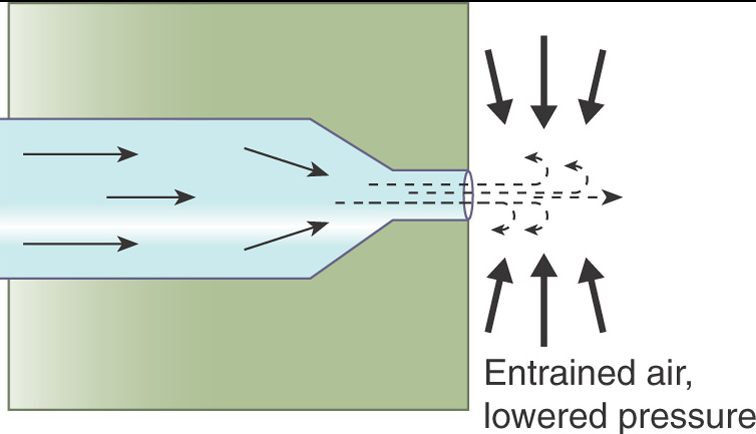Get Tech Tips
Subscribe to free tech tips.
Bernoulli’s Principle

Have you ever thought about the relationship between velocity and pressure? If you think about a fluid being forced through a small orifice, you can fairly easily picture the fluid speeding up as it goes through the orifice. However, did you also know that the surrounding static pressure DECREASES at the point of high velocity?
Energy Vanguard has a great video demonstrating this phenomenon:
This lower pressure in a high-velocity fluid (in this case, air) also explains the entrainment of air into a high-velocity supply air stream that helps mix the air in a room. When the velocity of an air stream is higher, the static pressure around that air stream is lower, which draws in air from around that stream (entrains it) and increases the total amount of air being moved in that direction, with additional air being drawn in from the sides.

This is also the principle that causes primary air to be drawn in around the stream of fuel that leaves a nozzle. It also causes secondary air to be drawn into a gas appliance around the flame as the hot air pulls up and through the appliance.
Remember that this effect relies on a directional velocity flow of a stream of fluid (air, water, gas, etc.) that is free to flow in the direction of its velocity. As soon as you add in turbulence and containment, it isn't all as clear; we do, however, see that directional motion turns into “static” pressurization as we see inside a duct system or in a refrigerant circuit. We will most often see this principle at work in its pure form in gas burners, flues, and chimneys. You can also see it at work in supply duct registers.
Either way, Bernoulli's Principle is a good thing to be aware of. Now that you know about it, you may just start to see it at work everywhere.
—Bryan
P.S. — Matt Bruner recently wrote a tech tip about Bernoulli's principle at work in duct design, specifically takeoffs from plenums. It's definitely worth a read!











Comments
To leave a comment, you need to log in.
Log In